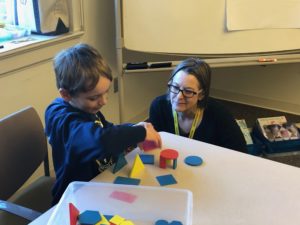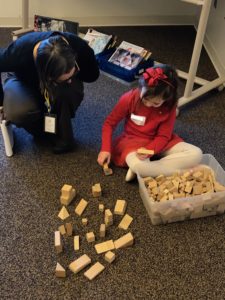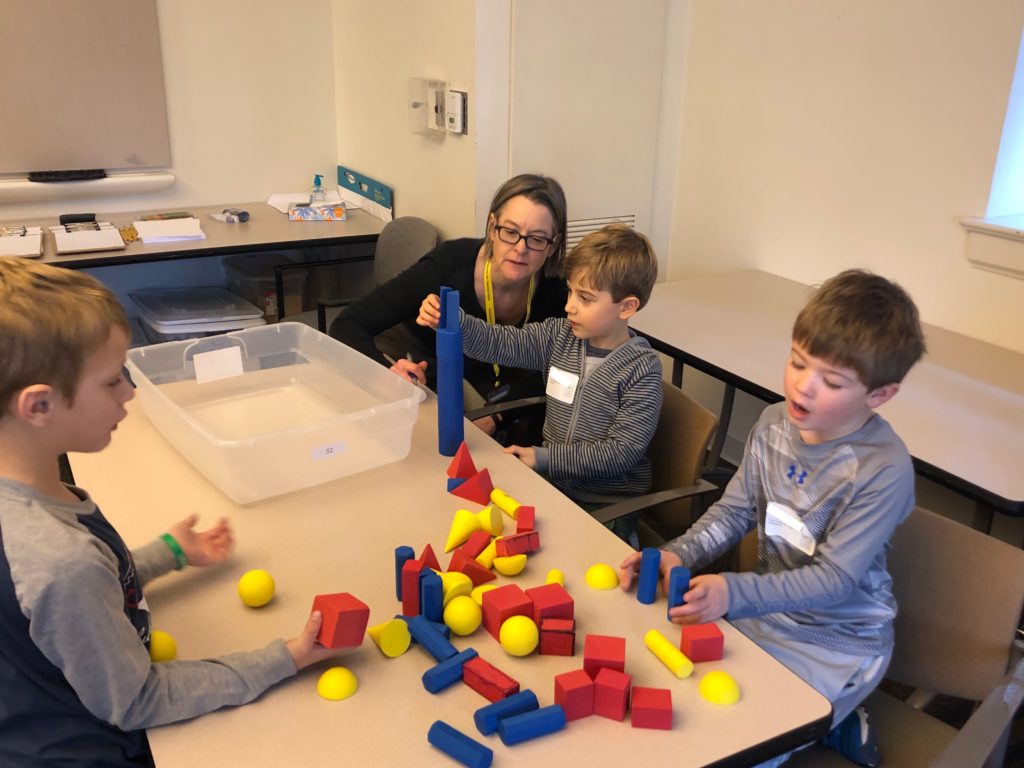Spring SAVY 2019, Day 1 – Discovering the Third Dimension (Kindergarten)
What a terrific launch to our spring session! The first part of our morning was dedicated to getting know one other. We focused on learning names of our new friends, explored our similarities and differences by playing a few rounds of the game “A Warm Wind Blows,” and shared why we decided to study geometry. Not surprisingly, we come together with a mix of specific goals (“I want to learn how to draw 3-D things”), general curiosity (“I think it will be amazing”), and delightful happenstance (“My mom chose it”).
Our course explores the third dimension through the lens of structure, with the broad aim of orienting our attention to the relationship of between the mathematics of shape and space and our everyday experiences. More specifically, goals for the session are to support students along their path toward
· Communicating mathematical ideas with precision by using vocabulary related to 3D shapes and their attributes
· Combining regular geometric solids to model objects in the physical world and objects of one’s imagination
· Developing spatial sense by composing and decomposing shapes in order to tackle 3D puzzles and problems
· Investigating form and function by analyzing familiar toys and describing how the function is impacted by the form
Students first engaged in an unstructured exploration at hands-on construction and design stations that included Kapla blocks, geoblocks, geometric solids, wooden cubes, pattern blocks, and attribute blocks. As they combined individual elements, peer conversations turned to the relationship between structure and shape. They shared observations (“It barely has anything that it’s standing on”) and predictions (“It’s not going to stand because it has a point [at the top]”), and tried again when structures collapsed unexpectedly. The need for precise vocabulary emerged naturally through our follow-up discussion, in which we shared our noticing and wonderings about three-dimensional shapes.
To connect our small-scale investigation of shape with the world around us, each student selected one three-dimensional shape and brought it along on our Shape Detective Walk. (Thank you for the coats!) Our purpose was to begin to see the world through geometer’s eyes by identifying natural and constructed elements that were similar to the four shapes selected by students: cylinder, sphere, rectangular-based prism, and cube. Ask your mathematician: Which three-dimensional shape did you choose for the shape walk? Did you find lots of examples of your shape or just a few? Why do you think that might be true?
Back in the classroom, we paused for snack and a conversation circle, then closed with a Construction Challenge. Using only ten blocks at a station of their choice, students tried to build the tallest possible structure. We undertook this as a design challenge rather than a competition. The challenge prompted our geometers to consider the affordances and constraints of particular shapes, and a post-construction “museum walk” provided an opportunity to learn from one another’s strategies. Some of us focused on putting “the biggest ones first” to create a stable base, whereas others prioritized inclusion of the “tallest” blocks.
It was a true pleasure to share a Saturday morning exploring and learning alongside your children, and I hope they’re looking forward to our continued journey as much as I am. Your child’s thinking assignment in the week ahead is to study the world using geometer’s eyes. As a family, consider supporting this goal by playing “I Spy” with a focus on three-dimensional solids (e.g., “I spy, with my little eye, something in the shape of a cube”). Throughout our sessions, please continue to ensure that your child is dressed for the weather, and be sure to send a snack and water bottle!
Christy Plummer
Fun at Design Stations



